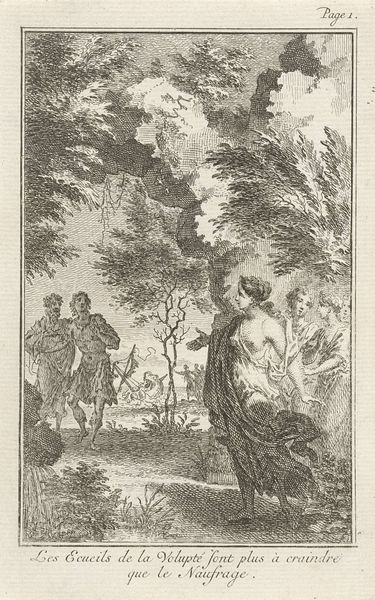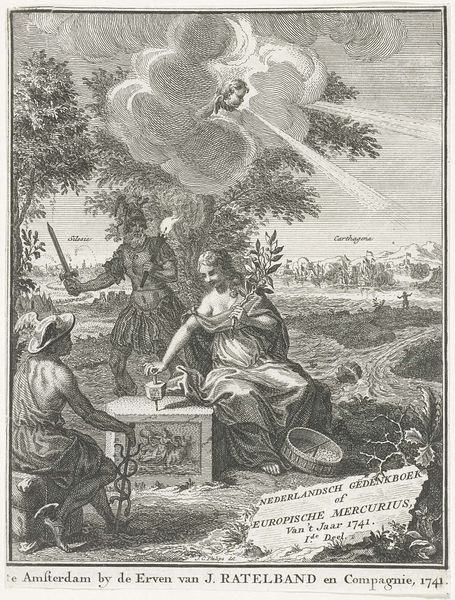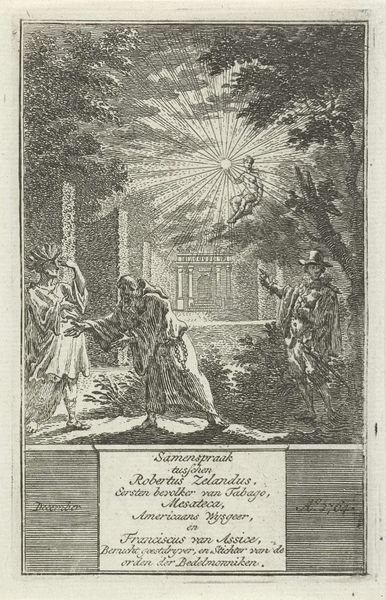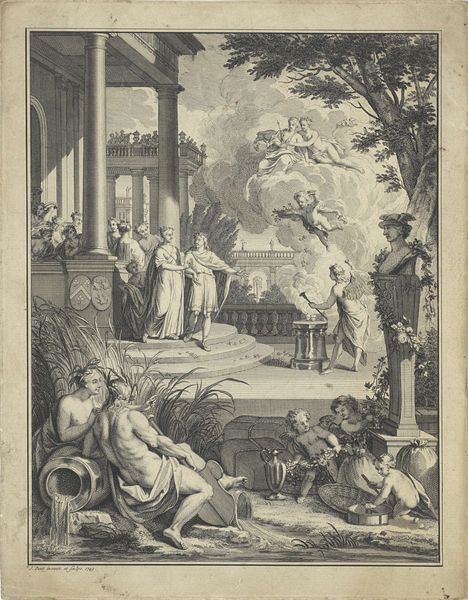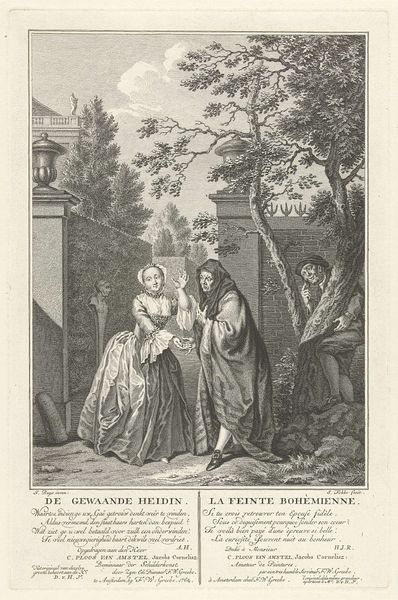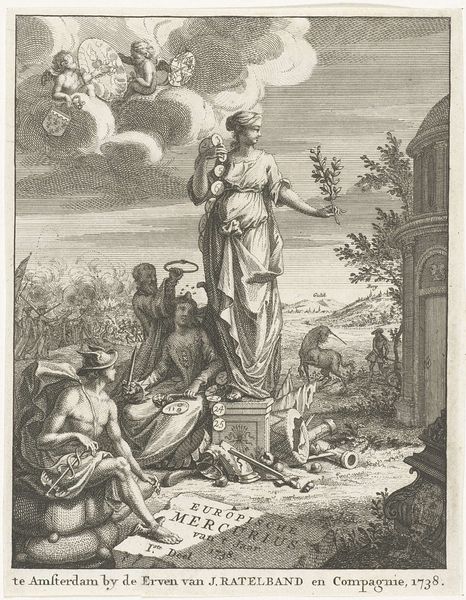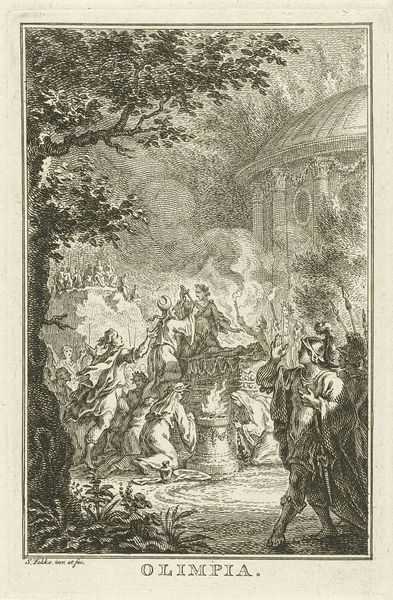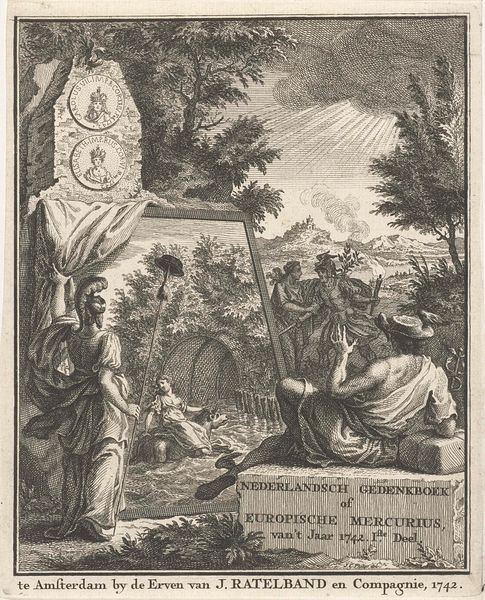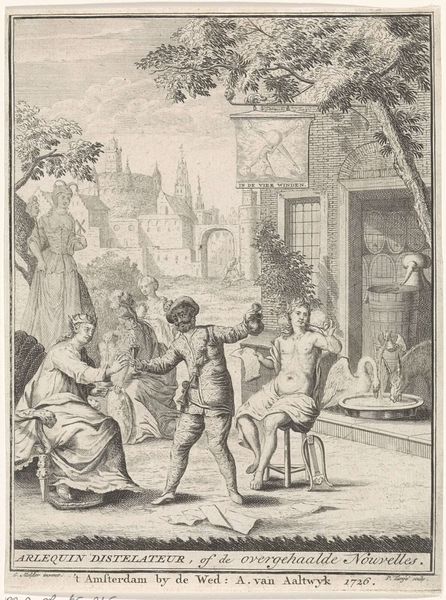
print, engraving
#
baroque
# print
#
old engraving style
#
genre-painting
#
history-painting
#
engraving
Dimensions: height 129 mm, width 81 mm
Copyright: Rijks Museum: Open Domain
Editor: So, this is "Ontmoeting tussen vier historische figuren," an engraving by Simon Fokke, sometime between 1722 and 1784. It depicts four historical figures in what appears to be a garden setting, but there’s a chaotic scene with a burning building in the background. The juxtaposition is a little unsettling. How do you interpret this work? Curator: Well, let’s start with the title. “Conversation between Four Historical Figures” isn’t particularly descriptive, is it? But it immediately places the emphasis on the figures depicted: Jan Pietersz. Coen, Jacob Mossel, Pieter van den Broek and Cornelis Houtman. All Governors-General of the Dutch East Indies. Given that background, and the implied setting within that geography, what do you make of the burning structure in the background? Editor: It gives me a sense of the colonial history of the time…perhaps the violence that underpinned the governance being portrayed? The text underneath clearly identifies these men as powerful rulers. Curator: Exactly. And Fokke created this engraving likely decades after some of these men held power. Do you think there might be a critique embedded in its design? Editor: Possibly. The fact that it's a print, meaning it could be widely distributed, suggests it was meant for public consumption and discussion, potentially questioning the legacy of Dutch colonialism. Is that reading too much into it? Curator: Not at all. Think about the socio-political context. Who was the audience for this print? What narratives about Dutch colonial history were circulating at the time? An image like this might be less about glorifying the figures and more about prompting a reflection on their impact, the costs associated with colonial expansion. Editor: That’s fascinating! I initially saw it as just a historical portrait, but seeing it as a piece engaging with public discourse about colonialism really opens it up. Curator: Precisely! And that's often the power of art – its ability to participate in broader societal conversations, prompting critical engagement with our shared past and present.
Comments
No comments
Be the first to comment and join the conversation on the ultimate creative platform.
